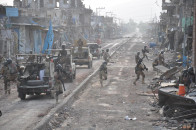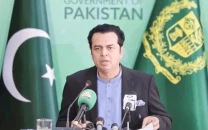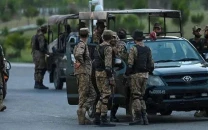Technical headaches: Faculty shortage taking toll on medical laboratory students
Only one full time teacher at College for Medical and Laboratory Technology.

Documents available with The Express Tribune reveal that the college has demanded about six permanent teachers including a principal from the NIH.PHOTO: FILE
A shortage of teachers at the College for Medical and Laboratory Technology (CMLT) is taking toll on the students, who once even had to directly pay a teacher’s salary to continue classes.
The college functions under the National Institute of Health (NIH), but devolution under the 18th Amendment has turned out to be a nightmare for over 200 students, who are taking up several courses in biotechnology, clinical pathology and blood bank management under the two-year BSc programme.
While talking about the issues they face, several students said that the college not only lacked faculty but also lab technicians, who provide all the required technical support to enable the lab to function effectively.
“There are several subjects such as quality control, biotechnology and histopathology that are taught by a single teacher for four sections,” said a student of BSc programme.
“The issue once got so bad that the students had to collect money to pay the teacher’s salary to continue classes,” another student said, adding that the exams were about to start but they had still not had a single class for some subjects.
According to the students, it was also usual for senior students teach classes for juniors with the permission and recommendation of teachers and the principal.
The arrival and departure of teachers for a short span of time is another issue, as according to the students, teachers are only paid Rs400 to Rs500 per lecture.
According to the students, the college used to have satisfactory faculty numbers, but with the passage of time, the situation has gone from bad to worse, and the college currently has no permanent faculty for a host of subjects.
Vice Principal Muhammad Yousaf is the only permanent teacher. He claimed that a summary has been sent to the high-ups to fill the vacant posts. No permanent teachers are available for teaching hematology, blood banking and clinical pathology, while all the other teachers are either temporary or from the NIH public health department.
Another teacher, Jamil Akhtar, commented that seniors teaching juniors has been a practice for long. “It has been going on since I was a student here in 1995. There is no harm,” he said.
Documents available with The Express Tribune reveal that the college has demanded about six permanent teachers including a principal from the NIH.
Currently, Baidar Bakht is working as acting principal with the additional responsibility of senior scientific officer.
The college was previously affiliated with King Edward Medical University (KEMU) Lahore. It was later affiliated with the University of the Punjab before the promulgation of the 18th Amendment.
“The students have been securing positions in every examination for years and this gives testimony to the hard work of the students and the teachers,” Akhtar said.
Bakht said that there was not an “acute shortage” of teachers and they accommodate students in case a teacher is absent.
“These issues persist everywhere, not just CMLT,” she said, adding that there was not a single instance when senior students took classes. She said that they often hire former students of the college for subjects where there is no permanent faculty. She said that the reason for non-permanent faculty was the government ban on recruitment.
The vice principal said that there was no harm in teachers taking more than two classes-a-day and overhauling the system was already under discussion. “We are also considering raising the lecture fee from Rs500 to Rs800 to overcome the faculty shortage,” she concluded.
Published in The Express Tribune, May 22nd, 2014.



















COMMENTS
Comments are moderated and generally will be posted if they are on-topic and not abusive.
For more information, please see our Comments FAQ